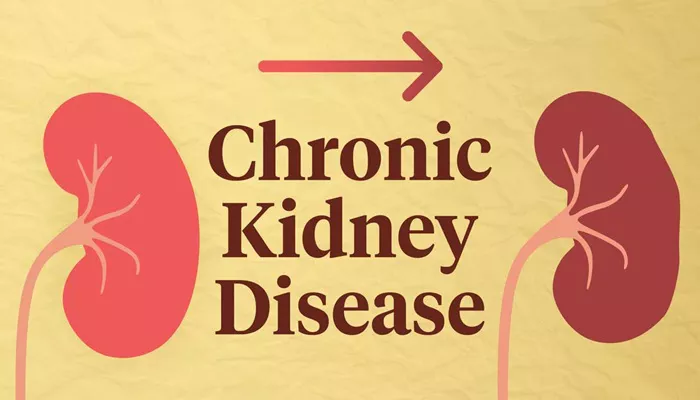Hypertension, or high blood pressure, is a common cardiovascular disorder. It can occur by itself, called primary or essential hypertension. However, sometimes high blood pressure is caused by another underlying condition. This is called secondary hypertension. Understanding secondary conditions linked to hypertension is critical for proper diagnosis and treatment.
Definition of Secondary Hypertension
Secondary hypertension is high blood pressure caused by an identifiable underlying medical condition. Unlike primary hypertension, which develops gradually without a clear cause, secondary hypertension has a direct trigger. Treating the underlying cause often improves or resolves the high blood pressure.
Common Secondary Conditions Leading to Hypertension
Kidney Disease
Kidney problems are among the most common causes of secondary hypertension. Conditions such as chronic kidney disease, glomerulonephritis, or renal artery stenosis impair the kidney’s ability to regulate blood pressure and fluid balance. Damaged kidneys can activate hormonal systems that raise blood pressure.
Endocrine Disorders
Several hormonal diseases can cause secondary hypertension by altering the body’s regulation of salt and fluid or by increasing vascular resistance.
Primary Aldosteronism
Also called Conn’s syndrome, this disorder causes excess production of aldosterone, a hormone that increases sodium retention and potassium loss, leading to high blood pressure.
Pheochromocytoma
This rare tumor of the adrenal gland produces excess catecholamines, causing episodes of severe hypertension along with headaches, sweating, and palpitations.
Cushing’s Syndrome
Excess cortisol production from adrenal or pituitary disorders can raise blood pressure by multiple mechanisms including salt retention and increased vascular sensitivity to hormones.
Thyroid Disorders
Both hypothyroidism and hyperthyroidism may lead to elevated blood pressure through effects on heart rate, vascular tone, and fluid balance.
Obstructive Sleep Apnea
This common condition causes intermittent oxygen deprivation during sleep. It triggers sympathetic nervous system activation and hormonal changes that raise blood pressure.
Medications and Substances
Certain drugs and substances can cause or worsen hypertension as a secondary condition. These include corticosteroids, oral contraceptives, nonsteroidal anti-inflammatory drugs (NSAIDs), decongestants, and some herbal supplements. Illicit drugs like cocaine and amphetamines also raise blood pressure.
How Secondary Conditions Cause Hypertension
Hormonal Imbalance
Many secondary conditions cause hypertension by disturbing hormone levels that regulate blood volume and vessel tone. For example, aldosterone increases sodium retention, while catecholamines constrict blood vessels.
Kidney Dysfunction
When kidneys do not function well, they fail to excrete excess salt and water, leading to increased blood volume and pressure. Also, damaged kidneys activate the renin-angiotensin-aldosterone system (RAAS), a hormone system that increases blood pressure.
Sympathetic Nervous System Activation
Conditions like sleep apnea or pheochromocytoma stimulate the nervous system. This raises heart rate and constricts blood vessels, increasing blood pressure.
Symptoms and Signs of Secondary Hypertension
Secondary hypertension may present similarly to primary hypertension but can sometimes be more severe or resistant to treatment. Clues include sudden onset of high blood pressure, very high readings, or poor response to standard medications. Symptoms may reflect the underlying cause, such as:
- Flank pain or swelling in kidney disease
- Muscle weakness or cramps with aldosteronism
- Headaches, sweating, palpitations in pheochromocytoma
- Excess weight gain or bruising in Cushing’s syndrome
- Loud snoring and daytime sleepiness in obstructive sleep apnea
Diagnostic Evaluation
Identifying secondary hypertension requires careful history, physical exam, and specific tests:
Laboratory Tests
Blood and urine tests can assess kidney function, electrolyte levels, hormone levels (aldosterone, renin, cortisol, thyroid hormones), and urine catecholamines.
Imaging Studies
Ultrasound or CT scans of kidneys and adrenal glands detect structural abnormalities. Sleep studies diagnose obstructive sleep apnea.
Specialized Tests
Tests like renal artery Doppler, plasma metanephrines, and aldosterone-renin ratio help pinpoint the cause.
Treatment of Secondary Hypertension
Treating the Underlying Cause
The cornerstone is addressing the primary condition. For example, removing an adrenal tumor, treating kidney disease, or managing sleep apnea can reduce or eliminate hypertension.
Medications
Antihypertensive drugs are used to control blood pressure while treating the underlying disorder. Choice depends on the cause and patient specifics.
Lifestyle Modifications
Salt restriction, weight loss, regular exercise, avoiding alcohol and smoking improve blood pressure control and overall health.
Complications of Untreated Secondary Hypertension
If untreated, secondary hypertension can cause damage similar to primary hypertension but may progress more rapidly. Complications include:
- Heart failure
- Stroke
- Kidney failure
- Vision loss
- Cardiac arrhythmias
Importance of Early Recognition
Recognizing and treating secondary hypertension early improves outcomes and can prevent irreversible organ damage. It requires vigilance by healthcare providers and patients to detect unusual features and pursue further evaluation.
Conclusion
A secondary condition to hypertension is an underlying medical cause that raises blood pressure. These include kidney disease, endocrine disorders, sleep apnea, and certain medications. Identifying the root cause is essential for effective management. Early diagnosis and treatment can reverse or control high blood pressure and reduce complications. Patients and clinicians must work together to recognize signs suggestive of secondary hypertension and undertake appropriate evaluation.
Related topics:


